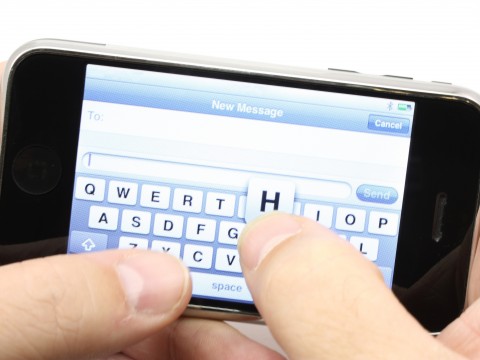9-1-1 History
9-1-1 History and Funding
How the 9-1-1 System is funded in Colorado
Funding for the operation of the Emergency Telephone System (E 911) comes from the surcharge affixed to each telephone line located in Larimer County. Each year, LETA is required by Colorado State Statute to set the tariff for the coming year. LETA develops a budget based on the predicted revenue, and approves the budget in a public hearing each November.
The 1997 legislature changed the statute to provide for collection of both wireline and wireless surcharge. In 2008, the legislature changed to collect surcharge from Voice Over the Internet Phones (VOIP), and finally in 2010 the legislature changed to capture 9-1-1 surcharge from prepaid wireless phones.
LETA has a conservative funding model and we continually plan, predict, and prepare for our financial needs in order to avoid increasing the 9-1-1 surcharge. Since the creation of the LETA, the surcharge remained at $.45 cents per phone line, per month until 2018 when the LETA Board approved raising the surcharge from $.45 to $.70 to address costs of moving to NG9-1-1. Each Authority sets their surcharge up to $1.83 per line. Anything over $1.83 requires special approval from the Public Utilities Commission (PUC). In February of 2022 LETA’s surcharge was increased to $1.10.
National 9-1-1 History
“9-1-1” is the three digit telephone number that has been designated as the “Universal Emergency Number,” for public use throughout the United States to request emergency assistance. It is intended as a nationwide telephone number giving the public direct access to a Public Safety Answering Point (PSAP) which will be responsible for taking the appropriate action. In the United States, the first catalyst for a nationwide emergency telephone number gained momentum in 1957 when the National Association of Fire Chiefs recommended use of a single number for reporting fires nationwide.
In 1967, the President’s Commission of Law Enforcement and Administration of Justice recommended that a “single number should be established” nationwide for reporting emergency situations. The use of different telephone numbers for each type of emergency was determined to be contrary to the purpose of a single, universal number. Other Federal Government Agencies and various governmental officials also supported and encouraged the recommendation. As a result of the immense interest in this issue, the President’s Commission on Civil Disorders turned to the Federal Communications Commission (FCC) for a solution.
In November of 1967, the FCC met with the American Telephone and Telegraph Company (AT&T) to find a means of establishing a universal emergency number that could be implemented quickly. In 1968, AT&T announced that it would establish the digits 9-1-1 (nine-one-one) as the emergency code throughout the United States.
The code 9-1-1 was chosen because it best fit the needs of all parties involved. First, and most important, it meets public requirements because it is brief, easily remembered, and can be dialed quickly. Second, because it is a unique number, never having been authorized as an office code, area code, or service code, it best meets the long range numbering plans and switching configurations of the telephone industry. Congress backed AT&T’s proposal and passed legislation allowing use of only the numbers 9-1-1 when creating a single emergency calling service thereby making 9-1-1 a standard emergency number nationwide. A Bell System policy was established to absorb the cost of central office modifications and any additions necessary to accommodate the 9-1-1 code as part of the general rate base. The E911 subscriber is responsible for paying network trunking costs according to tariffed rates, and for purchasing answering equipment from the vendor of their choice.
On February 16, 1968, Senator Rankin Fite completed the first 9-1-1 call to be made in the United States in Haleyville, Alabama. The serving telephone company was Alabama Telephone Company, which later became Contel Corp. This 9-1-1 system is still in operation today. On February 22, 1968, Nome, Alaska implemented 9-1-1 service.
In March of 1973, the White House’s Office of Telecommunications, issued a national policy statement, which recognized the benefits of 9-1-1, encouraged the nationwide adoption of 9-1-1, and provided for the establishment of a Federal Information Center to assist units of government in planning and implementation. The intense interest in the concept of 9-1-1 can be attributed primarily to the recognition of characteristics of modern society, i.e., increased incidences of crimes, accidents, and medical emergencies, inadequacy of existing emergency reporting methods, and the continued growth and mobility of the population. In the early 1970’s, AT&T began the development of sophisticated features for the 9-1-1 with a pilot program in Alameda County, California. The feature was “selective call routing.” This pilot program supported the theory behind the Executive Office of Telecommunication’s Policy. By the end of 1976, 9-1-1 was serving about 17% of the population of the United States. In 1979, approximately 26% of the population of the United States had 9-1-1 service, and nine states had enacted 911 legislation. At this time, 911 service was growing at the rate of 70 new systems per year.
By the year 1987, those figures had grown to indicate that 50% of the US population has access to 911 emergency service numbers.
In addition, Canada recognized the advantages of a single emergency number and chose to adopt 9-1-1 rather than use a different means of emergency reporting service, thus unifying the concept and giving 9-1-1 international stature.
At the end of the 20th century, nearly 93% of the population of the United States was covered by some type of 9-1-1 service.




